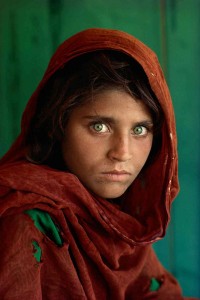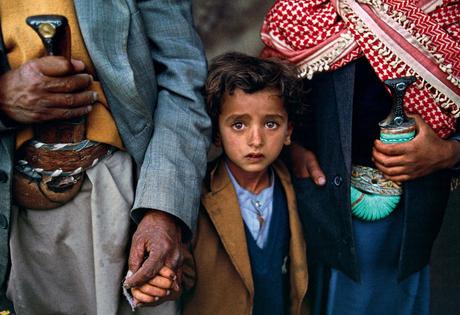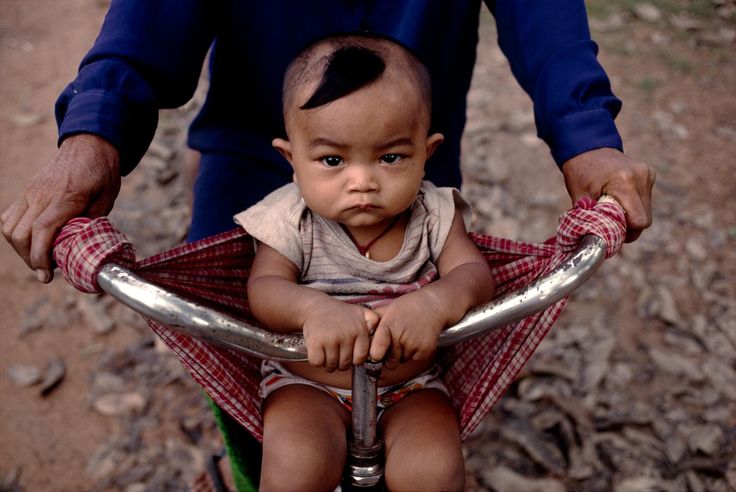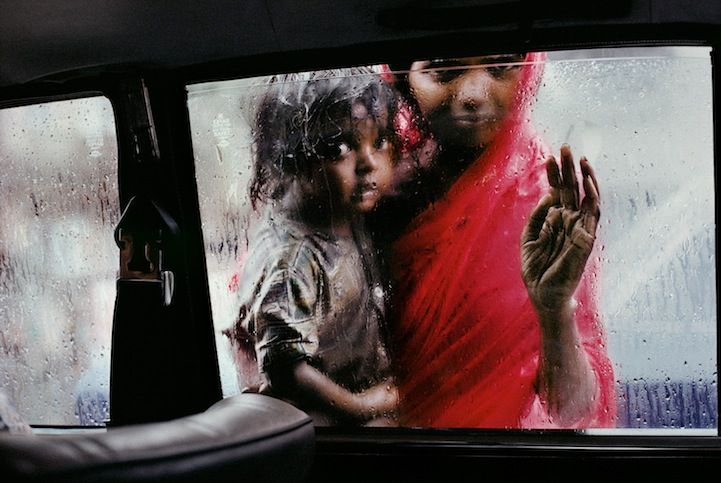
Afghan girl
The mysterious green-eyed girl has the expression recalling that of a frightened animal caught in the headlights of a car. She is known as the “Afghan girl” and her picture is renowned throughout the world. Though everyone knows this iconic photograph, they might not know much about the man behind it, Steve McCurry. His photographs uncover and introduce us to the unknown, hidden and dangerous parts of the world. He says he has been at “the frontline of history”, an apt description, as he has witnessed first-hand disasters such as 9/11, the Afghanistan war and the dire situation of refugees in camps. His dedication knows no boundaries: one time he got into Afghanistan dressed as a local tribesman. He then smuggled out his priceless photographs of the Afghanistan conflict, hiding his film rolls by sewing them into his clothes.
What struck me most, though, as I walked around the Steve McCurry exhibition at Műcsarnok, was the vibrancy of all his photographs and his innate ability to capture the moment. As Steve McCurry explained in the short film about him at the beginning of the exhibition, “great pictures happen along the journey, not at the destination” and they are “not planned”. The film shows this as he roamed the streets of India, looking for the “little moments” that he could capture with his camera. A good example of this is his photograph of “Child with relatives” in Hajjah, Yemen. This country has suffered wars, violence and the long presence of Al Qaeda: the eyes of the young boy in the photograph reflect this. As McCurry said, “[I] like to tell stories about my subjects through my photographs”. Through his photos he wants to show people what is going on in the world. In this one, the fear and defencelessness is apparent in the child’s eyes.

Child with relatives, Yemen
It is interesting to compare this photograph to that of the “Baby in a bicycle sling”, found in the same exhibition room. The baby’s eyes are also expressive of having seen horrors that he was too young to take in. But while in the first photograph the eyes reflect fear and defencelessness, the baby has the look on his face of a world-weary adult. This, to the viewer, is the far more shocking of the two photographs. These scenes are fleeting, yet McCurry captured them.

Baby in a bicycle sling, Cambodia
“If you recognize a good picture, go for it immediately”, he advises. And this is indeed what can be felt throughout this exhibition: McCurry picks up the small happenings of day-to-day life and makes a masterpiece out of them. His subjects are always natural and uncontrived, as in his image titled “A mother and child beg for alms through a taxi window during the monsoon”. This is also a fleeting, but common occurrence in India, where poverty is widespread, yet McCurry recognized and seized the moment. Furthermore, for me his photos were all greatly enhanced by the vibrant colours.

A mother and child beg for alms through a taxi window during the monsoon
I would highly recommend this exhibition to everyone, which is only open in Műcsarnok until April 3rd. Buy your tickets online ahead of time, so you won’t have to wait in the queue outside the museum, but will be admitted immediately. Additionally, the film at the beginning of the exhibition is a must see. It is an interview with McCurry that gives interesting insights into his work and experiences.
Sources used: Fotoflock, bjp-online, National Geographic,Magnum Photos
The video shown on Steve McCurry at the Steve McCurry exhibition at Műcsarnok



beautiful pictures, nice post, it’s really an attractive article, thank you for sharing
good article
Hi, thank you for sharing.
Why did you interest to compare your photograph with the others?